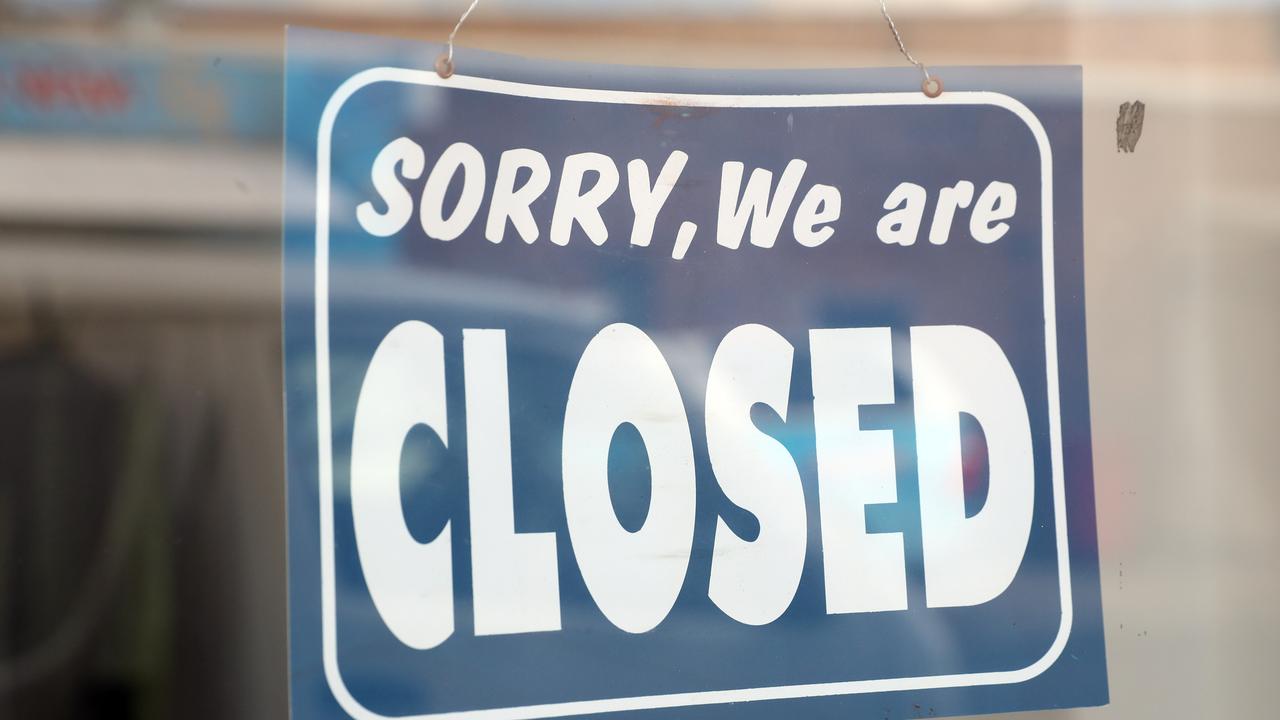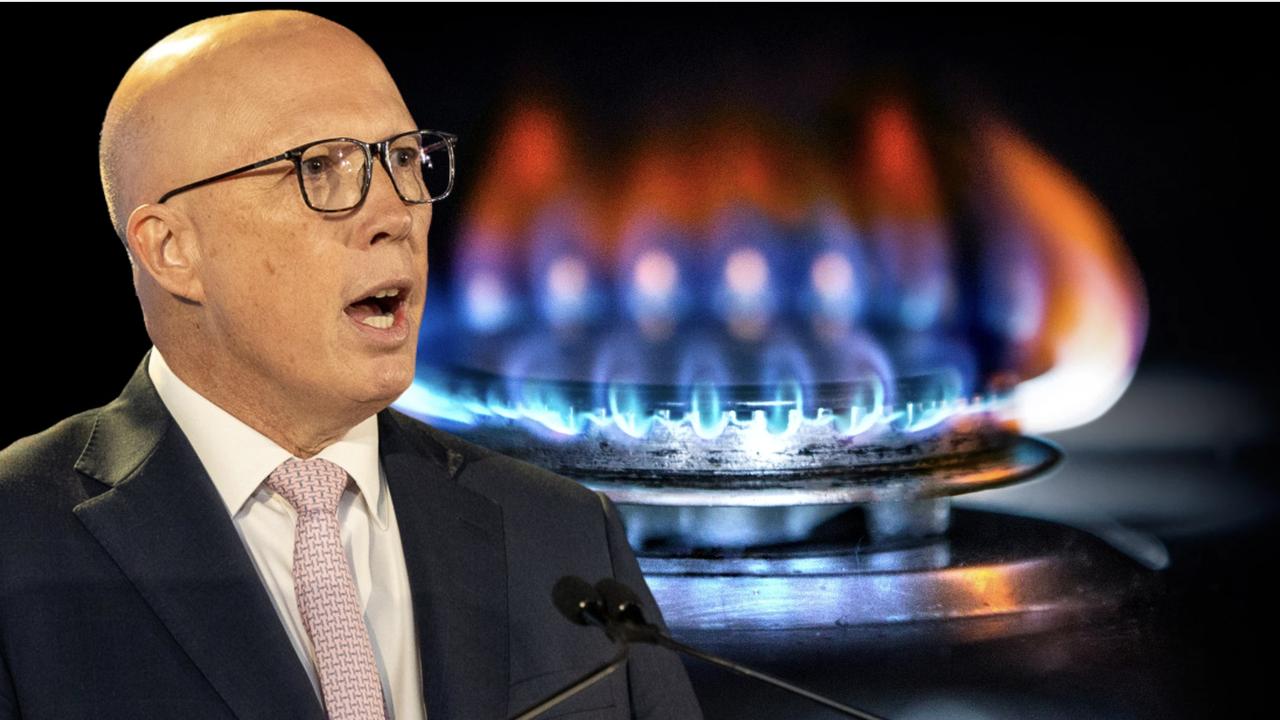Global gas prices at lowest levels in 10 months as Labor’s cap kicks in
Global gas prices have fallen to levels last seen prior to Russia’s invasion of Ukraine as Australia’s domestic gas price cap takes effect in the face of industry opposition.

Business
Don't miss out on the headlines from Business. Followed categories will be added to My News.
Global gas prices have fallen to levels last seen before Russia’s invasion of Ukraine as Australia’s domestic gas price cap takes effect in the face of industry opposition.
A mild northern hemisphere winter has seen gas prices in both Europe and Asia tumble to the lowest level in 10 months, with storage levels staying high despite the ongoing disruption to gas supplies due to Russia’s war in Ukraine.
Liquefied natural gas futures traded on the Japan-Korea Marker were sitting at about $US28.50 per mmbtu on Thursday evening, well below levels of more than $US80 hit as Australia’s trading partners scrambled for supply in August, but around the $US28.40 average traded in February, as Russian tanks crossed the border of Ukraine, according to Bloomberg data.
European futures traded on the Dutch TTF exchange were worth €81.35 a megawatt hour on Thursday, slightly above the February average of €80.40, but less than a quarter of the €345.50 peak hit in late August.
Similarly Australian domestic gas spot prices, from the Wallumbilla hub, were worth $10.67 a gigajoule on Wednesday, according to Australian Energy Market Operator figures, well below the soaring levels that forced AEMO to cap trading at $40 a gigajoule during the winter energy crisis.
The federal government capped domestic Australian gas prices at $12 a gigajoule for the next year after the hasty passage of legislation before Christmas, with Finance Minister Kay Gallagher issuing orders enforcing the price cap on December 22.
But analysts and regulators have been warning for months that softening gas prices may not last, either globally or locally.
In August, the ACCC warned of a “looming” shortfall in the east coast gas supply, saying domestic supplies could fall short of projected 2023 demand by more than 55 petajoules, which could see prices spike in the winter – a situation the government’s market intervention is designed to prevent.

Last week Citi analysts said European TTF and Asian JKM LNG prices were likely to “stay elevated” in 2023, despite the tumbling value of futures contracts.
“A warm start to winter, combined with heating demand curtailment by European consumers, have helped European gas storage stay elevated and kept TTF prices in check. Further, a gradual return of French nuclear power plants in 4Q22 and 1Q23 should also ease power demand for natural gas in 2023,” Citi analysts said in a client note before the Christmas break.
“That said, we also caution against shorting TTF and JKM prices at current levels. Volatility is bound to stay high in winter. Additionally, continued industrial demand rationing looks to be necessary during the second and third quarters of 2023 as Europe strives to replenish natural gas inventory before next winter.”
Storage facilities in the EU were less than 40 per cent full ahead of Russia’s invasion of Ukraine in February, after the northern winter, and were about 70 per cent full when gas prices peaked in August, according to data drawn from industry group Gas Infrastructure Europe.
In November and December 2021, gas storage fell from 75 per cent to 52 per cent in the EU. This year the mild northern winter has led to a fall in gas storage levels from 93 per cent to 83 per cent.
Citi and UBS analysts noted recently that the lifting of China’s zero-Covid rules, and thaw in relations between Canberra and Beijing, could also lead to greater competition for Australian gas exports amid tight domestic supply.
UBS economist George Tharenou said in a note China’s reopening could boost demand for energy exports, noting there was little new gas supply likely to come into global markets in the near term.
“China’s LNG import volumes are 39 per cent below their trend growth rate, but could rebound sharply with reopening,” he said.
“UBS is already bullish on Asian Spot (JKM) LNG prices, expected to rise to $US43.5 per MBtu in 2023 (from about $US6 per MBtu in 2019), with little new near-term supply.”
Citi analysts said China’s LNG imports fell about 20 per cent this year, and the country’s reopening could see it compete with Europe for available cargoes. “With limited new LNG supply coming online in 2023, Europe needs to keep TTF elevated to attract LNG to fill the gap left by the shortfall from pipeline natural gas supply from Russia,” the analysts said.
Australian domestic gas prices could also be affected by the ongoing brawl between gas producers and the federal government over price caps and its proposed code of conduct for the industry.
Shell and Woodside both suspended talks with customers for new supply contracts in the wake of the unveiling of the proposed rules in December, with Shell – operator of the QCLNG gas export plant in Queensland – halting a tender process offering 50PJ of gas to buyers in 2023 and 2024 and Woodside suspending talks to sell up to 50PJ of gas in 2024 and 2025.
Originally published as Global gas prices at lowest levels in 10 months as Labor’s cap kicks in





